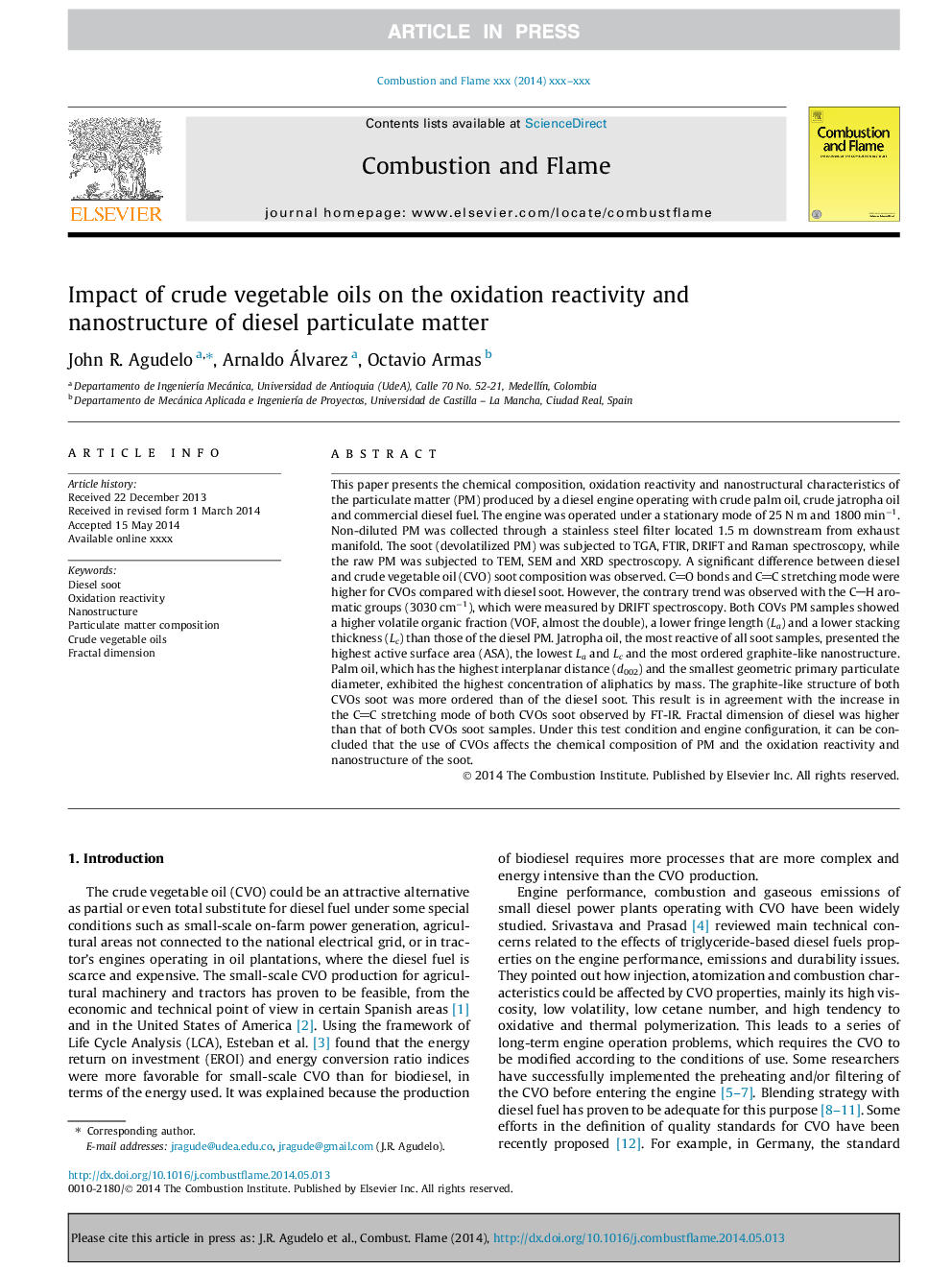| Article ID | Journal | Published Year | Pages | File Type |
|---|---|---|---|---|
| 10264343 | Combustion and Flame | 2014 | 12 Pages |
Abstract
This paper presents the chemical composition, oxidation reactivity and nanostructural characteristics of the particulate matter (PM) produced by a diesel engine operating with crude palm oil, crude jatropha oil and commercial diesel fuel. The engine was operated under a stationary mode of 25Â NÂ m and 1800Â minâ1. Non-diluted PM was collected through a stainless steel filter located 1.5Â m downstream from exhaust manifold. The soot (devolatilized PM) was subjected to TGA, FTIR, DRIFT and Raman spectroscopy, while the raw PM was subjected to TEM, SEM and XRD spectroscopy. A significant difference between diesel and crude vegetable oil (CVO) soot composition was observed. CO bonds and CC stretching mode were higher for CVOs compared with diesel soot. However, the contrary trend was observed with the CH aromatic groups (3030Â cmâ1), which were measured by DRIFT spectroscopy. Both COVs PM samples showed a higher volatile organic fraction (VOF, almost the double), a lower fringe length (La) and a lower stacking thickness (Lc) than those of the diesel PM. Jatropha oil, the most reactive of all soot samples, presented the highest active surface area (ASA), the lowest La and Lc and the most ordered graphite-like nanostructure. Palm oil, which has the highest interplanar distance (d002) and the smallest geometric primary particulate diameter, exhibited the highest concentration of aliphatics by mass. The graphite-like structure of both CVOs soot was more ordered than of the diesel soot. This result is in agreement with the increase in the CC stretching mode of both CVOs soot observed by FT-IR. Fractal dimension of diesel was higher than that of both CVOs soot samples. Under this test condition and engine configuration, it can be concluded that the use of CVOs affects the chemical composition of PM and the oxidation reactivity and nanostructure of the soot.
Keywords
Related Topics
Physical Sciences and Engineering
Chemical Engineering
Chemical Engineering (General)
Authors
John R. Agudelo, Arnaldo Álvarez, Octavio Armas,
